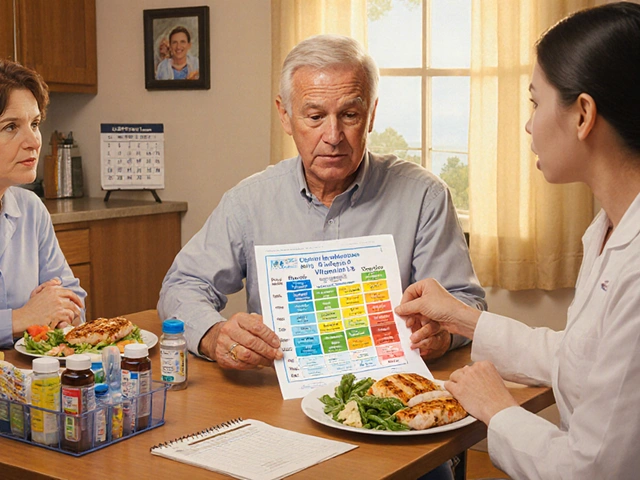Nitrofurantoin antibiotic: a practical guide for treating bladder infections
Nitrofurantoin is one of the antibiotics doctors reach for when a bladder infection (uncomplicated UTI) shows up. It works directly in the urine, so it’s great for infections limited to the lower urinary tract. Before you start a course, know when it helps, how to take it, and what to watch for.
What it's for and how to take it
Doctors commonly use nitrofurantoin for uncomplicated cystitis — burning, frequent peeing, urgency without fever or flank pain. Typical adult dosing is nitrofurantoin 100 mg twice a day for five days (this is the usual Macrobid regimen). There are different formulations (macrocrystals, monohydrate/macrocrystals), so follow the exact label and your prescriber's directions. Take it with food to reduce stomach upset and to help absorption.
It’s not a go-to for kidney infections, sepsis, or severe urinary tract infections. If you have fever, chills, nausea, vomiting, or back/flank pain, get evaluated — those signs may mean the infection is beyond the bladder and needs different care.
Side effects, safety checks, and interactions
Common side effects are mild: nausea, headache, and sometimes dark-colored urine (harmless but surprising). If you notice shortness of breath, persistent cough, chest pain, or unexplained fever while on nitrofurantoin, stop it and call your provider — rare but serious lung reactions can occur. Long-term or repeat use can also (rarely) cause nerve damage or liver problems, so chronic use needs close monitoring.
Pregnant people can often take nitrofurantoin, but many clinicians avoid it at the very end of pregnancy (near delivery) and avoid it if the newborn may have G6PD deficiency. If you have severe kidney disease or produce very little urine, nitrofurantoin may not reach effective levels and is generally avoided — talk to your prescriber about kidney function tests (creatinine or eGFR) first.
Watch for drug interactions: some antacids can reduce how well nitrofurantoin is absorbed. Always tell your clinician about other medicines, supplements, and herbal products you use. If you’re taking multiple drugs for chronic conditions, your provider will check for problems before prescribing.
How quickly should you feel better? Many people start improving within 48–72 hours. If symptoms worsen or don’t improve after three days, go back to your clinician — you may need a different antibiotic or further testing. Also complete the full prescribed course even if you feel well, unless your provider tells you otherwise.
Quick tip: save the prescription information and note any past reactions to antibiotics. That helps your clinician pick the safest, most effective option next time. If you’re unsure whether nitrofurantoin is right for you, ask directly about kidney health, pregnancy status, and any history of lung or nerve problems before starting it.

How to Buy Nitrofurantoin Online Safely: Trusted Pharmacies & Step-by-Step Guide
Learn how and where to safely buy Nitrofurantoin online. Explore pharmacy tips, find trusted sources, and get essential guidance for secure purchases.
MedicationsLatest Posts
Tags
- online pharmacy
- medication
- dietary supplement
- side effects
- online pharmacy UK
- mental health
- impact
- online pharmacies
- dosage
- medication safety
- skin health
- health
- pain relief
- dietary supplements
- massage therapy
- medication side effects
- eye inflammation
- health benefits
- mental health treatment
- thyroid medication




